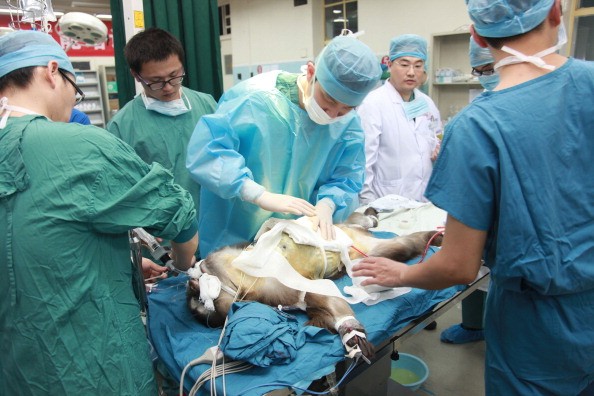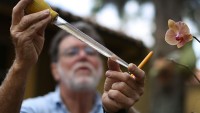Chinese Academy of Sciences Outshines Competition in Global Nature Index
| Jenia Cane | | Apr 22, 2016 12:03 AM EDT |
(Photo : ChinaFotoPress/ChinaFotoPress via Getty Images) A Tibetian macaque, also known as macaca thibetana, is tended to in an intensive care unit (ICU) after undergoing a liver transplant at a hospital of a military medical university on May 8, 2013 in Xi'an, Shaanxi province of China.
For the fourth consecutive year, the Chinese Academy of Sciences (CAS) garnered the top spot among global science institutions in the British Nature Publishing Group's prestigious Nature Index.
China placed second after the United States in the British Group's ranking based on countries and regions, reported Xinhua via China Daily.
Like Us on Facebook
The CAS is considered as the world's largest scientific organization, whose membership is comprised of 114 institutions and 48,500 researchers.
The scientists of CAS have so far provided the largest contribution to the high-quality research materials contained in the index, a contribution that has seen a compounded annual growth rate of 6.8 percent since 2012.
Last year, the Chinese Academy of Sciences' Institute of Chemistry was one of the largest contributing departments to the institution's weighted fractional count (WFC) -- 1,357.82, which is nearly double the 772.33 output of second-placed Harvard University.
The Nature Index is a database of author-affiliation information gathered from research articles published by an independently selected group of 68 high-quality science journals around the world.
The index has been a highly-reliable source of information in the scientific community, as it provides a close to real-time representation for high-quality research output at the institutional, national and regional levels.
Although the 68 science journals represent less than one percent of the journals covering natural sciences in the Web of Science, they account for about 30 percent of total citations made by natural science journals.
Among the top 10 science institutions in the world are the French National Centre for Scientific Research, the Max Planck Society in Germany, Stanford University in the United States, University of Tokyo in Japan, the Massachusetts Institute of Technology in the United States, the Helmholtz Association of German Research Centres, the University of Oxford and the University of Cambridge in Britain.
The Chinese Academy of Sciences' achievements are worth noting in light of the high-quality scientific research and significant number of articles published US scientists in 2015, which outpaced the output of every nation that year.
©2015 Chinatopix All rights reserved. Do not reproduce without permission
EDITOR'S PICKS
-

Did the Trump administration just announce plans for a trade war with ‘hostile’ China and Russia?
-

US Senate passes Taiwan travel bill slammed by China
-

As Yan Sihong’s family grieves, here are other Chinese students who went missing abroad. Some have never been found
-

Beijing blasts Western critics who ‘smear China’ with the term sharp power
-

China Envoy Seeks to Defuse Tensions With U.S. as a Trade War Brews
-

Singapore's Deputy PM Provides Bitcoin Vote of Confidence Amid China's Blanket Bans
-

China warns investors over risks in overseas virtual currency trading
-

Chinese government most trustworthy: survey
-

Kashima Antlers On Course For Back-To-Back Titles
MOST POPULAR
LATEST NEWS
Zhou Yongkang: China's Former Security Chief Sentenced to Life in Prison

China's former Chief of the Ministry of Public Security, Zhou Yongkang, has been given a life sentence after he was found guilty of abusing his office, bribery and deliberately ... Full Article
TRENDING STORY

China Pork Prices Expected to Stabilize As The Supplies Recover

Elephone P9000 Smartphone is now on Sale on Amazon India

There's a Big Chance Cliffhangers Won't Still Be Resolved When Grey's Anatomy Season 13 Returns

Supreme Court Ruled on Samsung vs Apple Dispute for Patent Infringement

Microsoft Surface Pro 5 Rumors and Release Date: What is the Latest?











